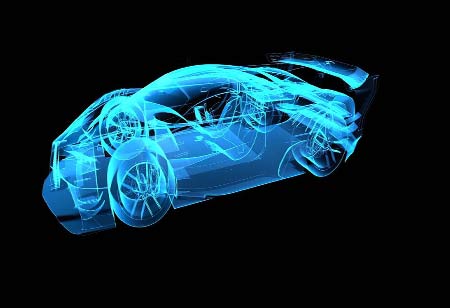THANK YOU FOR SUBSCRIBING
THANK YOU FOR SUBSCRIBING
Be first to read the latest tech news, Industry Leader's Insights, and CIO interviews of medium and large enterprises exclusively from Auto Tech Outlook

By
Auto Tech Outlook | Saturday, December 17, 2022
Stay ahead of the industry with exclusive feature stories on the top companies, expert insights and the latest news delivered straight to your inbox. Subscribe today.
The EU reached a deal to ban all internal combustion engine car sales by 2035.
FREMONT, CA: According to recent research on the European auto industry, the high cost of energy may force the closure of up to 40 per cent of the EU's auto manufacturing capacity in the following year.
This latest setback for the auto sector comes after years of intense pressure to reduce emissions, which resulted in the diesel emissions scandal. Assuming the EU energy crisis eventually abates this decade, EU automakers, or at least those that survive, will face a brand-new challenge: they must stop producing all ICE-powered vehicles by 2034 since they won’t be able to sell any of them on the European market after 2035.
The domestic auto industry in the EU will suffer one last blow, as industries anticipate that the ban will be swiftly lifted due to intense public pressure, leaving domestic automakers with an all-EV manufacturing capacity and the associated supply chains, even though many consumers will switch back to ICE-powered vehicles.
The agreement aims to outlaw the sale of all ICE-powered personal vehicles by 2035. All member states have signed on to it and have received approval from the EU parliament and commission. This means that it is a done deal with no remaining obstacles. Given that it will happen in just 12 years, all EU automakers must start active preparations for it immediately.
To scale up EV production capabilities, including associated supply chains, they will all need to push for higher EV sales, even as the current ICE-centred manufacturing capacities, together with associated supply chains, will need to be shut down or, in some cases, repurposed.
Everyone should understand that industries are talking about a transition towards that turning point in 2035 that will set the wheels in motion for the EU automotive industry to stop manufacturing all ICE-powered passenger cars by around 2033, with the final batch of conventional cars produced that year sold the following year, meaning they will not want to have any left in inventory by the end of 2034.
EVs make up about one in every five passenger vehicles sold in Europe. By the way, the cost of an EV in Europe is presently around $55,000 on average. Most EU consumers cannot afford to spend this much on a vehicle. There are, of course, other less expensive options, but the majority of those are vehicles designed solely for urban travel, with a constrained range and other limitations, whereas many people have a propensity to travel, whether for leisure, to visit relatives, or to experience the outdoors. This is by far the biggest issue that the sector needs to address or otherwise deal with in the coming ten years.
Infrastructure, including adjustments to the power grid, charging stations, and other challenges, must be handled concurrently with this significant forced shift of a major European industry. Automobile manufacturers will also need to spend a lot of money on retooling, redesigning vehicles, and other related expenses. The larger industrial base must adapt to produce new parts and materials.
 Copyright © 2025 AutoTech Outlook. All Rights Reserved | Privacy Policy | Subscribe | Sitemap | About us | Feedback Policy | Editorial Policy
Copyright © 2025 AutoTech Outlook. All Rights Reserved | Privacy Policy | Subscribe | Sitemap | About us | Feedback Policy | Editorial Policy 
However, if you would like to share the information in this article, you may use the link below:
https://www.autotechoutlookapac.com/news/eu-ice-ban-nwid-1184.html




